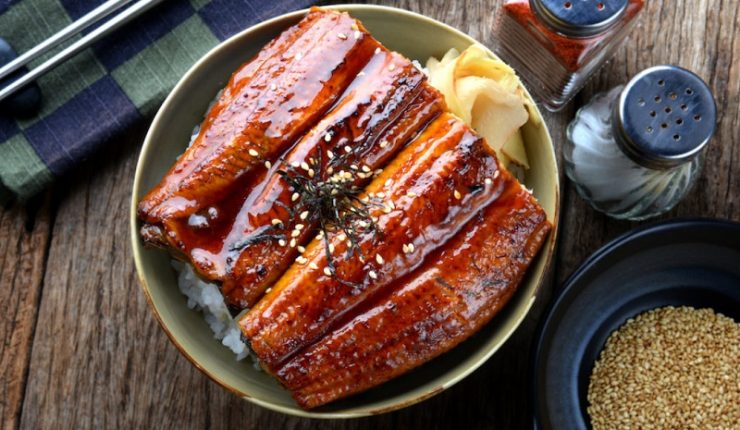EVEN though you have not been able to travel far because of the pandemic, you can still travel through your senses by tasting the specialties of other countries that are available in the city where you live.
One of them is unagi, a food from Japan made by a chef from Japan at Sari Pacific Hotel Jakarta. The Japanese restaurant in the hotel serves a variety of unagi dishes from delicious and tasty eel to pamper your tongue.
The first is to taste a variety of eel dishes, the first is Unagi Tamago which is served in a soft omelette. Unlike tamago, aka omelette, which is often served in sushi restaurants, this Unagi Tamago has a savory taste.
Usually, tamago served in the Japanese way is sweet. The softness of the eggs matched the eel in the middle of the tamago. But because the pieces are not that big, the taste of the eggs dominates even though it doesn’t reduce the deliciousness of the unagi.
Lovers of hot pot dishes can also order unagi which is cooked in a hot bowl with soft eggs and a sweet and savory gravy, very suitable to be eaten with fluffier rice which can neutralize the sweet taste.
Especially for this dish, Executive Japanese Chef Sari Pacific Jakarta, Toshiya Honda, said that the taste is indeed made sweeter according to the tastes of the Indonesian people.
At this restaurant, you can also taste unagi in its “fried” form, to be precise, tempura. Just like tempura in general, unagi tempura which is larger than the usual shrimp stuffed tempura is also served with dipping sauce and grated Japanese radish (daikon). The outside is also crunchy, but the inside is still soft.
The ultimate menu that is no less delicious is the most common way of serving unagi, namely kabayaki. The kabayaki menu features unagi which is halved, grilled, steamed and re-baked in a special sauce with a sweet and savory taste of soy sauce, sugar and mirin.
Because it has been steamed, the bones can be eaten because the texture is already soft. In Japan, Toshiya said that the unagi kabayaki dish is arguably the most purchased because it is one of the most basic menus.
This unagi is delicious to eat with rice. The serving style is like in Nagoya, namely Hitsumabushi, where roasted unagi is cut into a bite size and placed on top of rice. The difference is, here, unagi is served separately with rice. Dishes in The Unagi Season can be enjoyed with prices starting from IDR198,000 ++.
The Japanese Sari Pacific Jakarta also offers other culinary menus, such as Robatayaki, Teppanyaki, Sushi bar, Tempura, Sukiyaki and others. The restaurant is open every day from 11:00 to 21:00. The eel processed in The Unagi Season menu at The Japanese restaurant comes from Indonesia. Sari Pacific Jakarta Executive Chef, Toshiya Honda, explained the difference between Indonesian and Japanese eels. In terms of size and taste, eel from Japan is bigger, fatty and the meat is tender.
In Japan itself, eels from abroad such as Indonesia and Taiwan are also sold in supermarkets or convenience stores (konbini) aka convenience stores (convenience stores). The price is relatively cheaper than the original Japanese unagi which takes two to three years to be ready for cooking.
Unagi is classified as a luxury food that is usually served during the summer because it contains a lot of vitamins A and E. Unagi is consumed in summer thanks to its properties to increase stamina which is weakened by the hot sun. Unagi can also be separated based on three categories, low class, middle class and high class.
The most expensive unagi can be used in its entirety. The price can even reach IDR1.5 million per head. As for one portion, it can be valued at IDR4 million to IDR5 million. Cheaper versions can be found at supermarkets or konbini, which usually sell a lot of unagi in the summer.
He added that unagi is difficult to process, so Japanese people don’t cook it themselves, but instead buy dishes that have been made in restaurants or supermarkets.
Want to stop by an area famous for unagi dishes? Chef Toshiya suggested to go to Shizuoka prefecture, Japan which is close to Mount Fuji. There are many ponds for Japanese eel cultivation, where the water is clean because it is close to the mountain and the air is fresh. [antaranews/photo special]
















